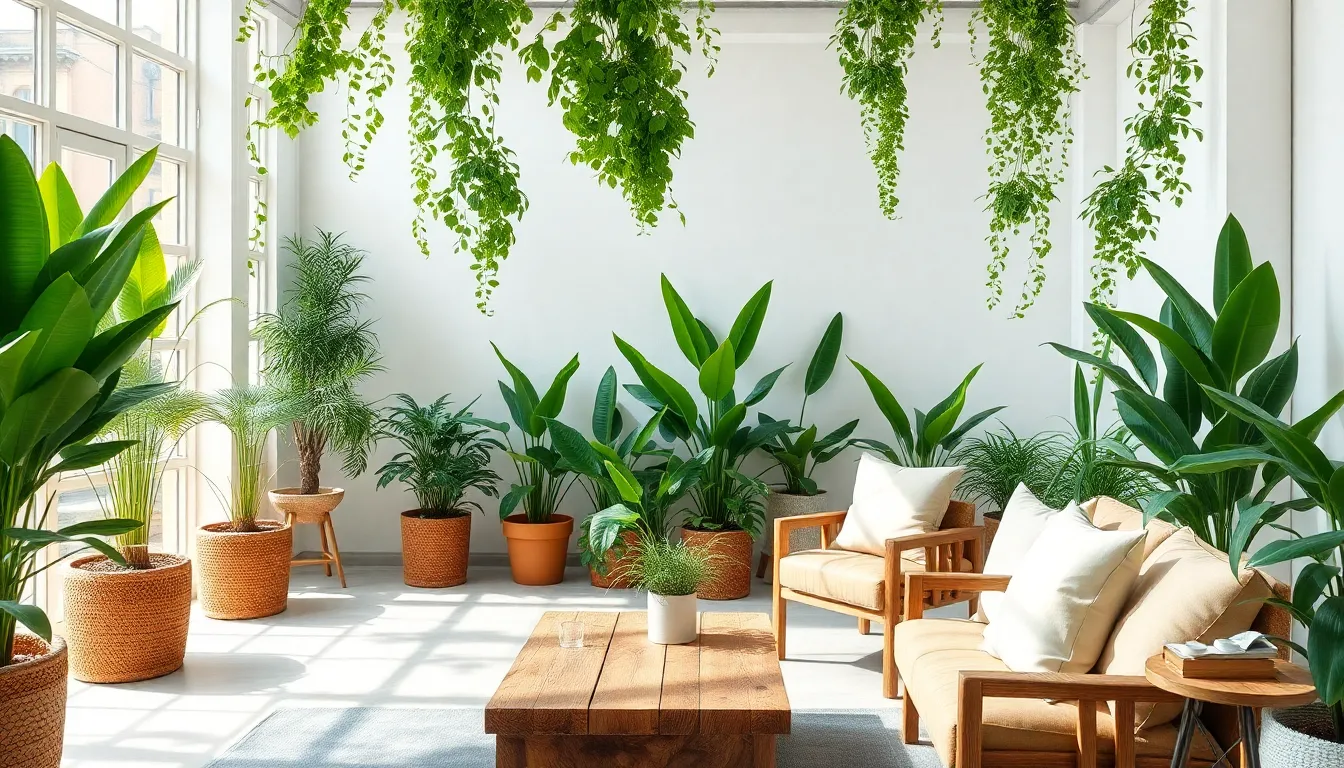In a world increasingly focused on sustainability, green decor has emerged as a vibrant trend that breathes life into homes and offices alike. This design philosophy embraces eco-friendly materials, energy-efficient solutions, and a strong connection to nature, transforming spaces into serene havens.
Incorporating green decor not only enhances aesthetics but also promotes well-being and environmental responsibility. From lush indoor plants to sustainable furniture, each element contributes to a healthier living environment. As individuals seek to create spaces that reflect their values, green decor stands out as a stylish and conscientious choice.
Table of Contents
ToggleWhat Is Green Decor?
Green decor emphasizes sustainability in interior design, prioritizing eco-friendly, non-toxic, and renewable materials. This design approach promotes environmental responsibility while enhancing aesthetics and comfort. Green decor incorporates elements such as:
- Indoor Plants: They improve air quality and offer a calming presence. Common choices include snake plants, peace lilies, and pothos.
- Sustainable Furniture: This type of furniture uses materials like reclaimed wood or recycled metal. It reduces waste and often features durable designs.
- Energy-Efficient Lighting: LED bulbs and solar-powered fixtures cut energy consumption while providing adequate illumination.
- Natural Fabrics: Organic cotton, hemp, and bamboo fabrics contribute to a healthier indoor environment. These materials are often biodegradable and free from harmful chemicals.
- Eco-Friendly Paints: Low-VOC (volatile organic compound) and non-toxic paints enhance aesthetics while reducing indoor air pollution.
Utilizing these elements fosters serene environments, promoting well-being and creating spaces that reflect individual values. Green decor merges style with sustainability, making it a practical choice for conscious consumers.
Benefits of Green Decor

Green decor presents numerous advantages that affect both the environment and individual health. Incorporating sustainable practices and materials into design leads to significant benefits.
Environmental Impact
Green decor significantly lowers carbon footprints through the use of eco-friendly materials. Sustainable furniture, sourced from reclaimed wood or recycled metal, minimizes waste and conserves resources. Indoor plants absorb carbon dioxide and release oxygen, enhancing air quality. Energy-efficient lighting solutions, such as LED bulbs, consume less electricity, reducing energy demand. By adopting these practices, individuals contribute to conservation efforts while creating stylish interiors that reflect an environmental commitment.
Health Benefits
Health benefits of green decor include improved indoor air quality and enhanced well-being. Indoor plants filter harmful pollutants, leading to cleaner air and reducing allergens. Sustainable materials, free from toxic chemicals, create healthier living spaces. Natural fabrics, like organic cotton and bamboo, offer comfort without harmful substances. Additionally, green decor promotes mental health by creating serene and calming environments, which reduce stress levels. Overall, embracing green decor fosters a healthier lifestyle and improves quality of life.
Popular Elements of Green Decor
Green decor combines aesthetics with sustainability. Key elements include indoor plants and eco-friendly materials that contribute to a healthier living environment.
Indoor Plants
Indoor plants serve multiple purposes in green decor. They enhance air quality by filtering toxins and releasing oxygen. Popular choices include snake plants, pothos, and peace lilies, known for their low maintenance and air-purifying qualities. Placing these plants in natural light zones ensures optimal growth. Incorporating greenery into spaces also creates a calming effect, promoting mental well-being and a connection to nature.
Eco-Friendly Materials
Eco-friendly materials form the backbone of green decor. Sustainable furniture crafted from reclaimed wood or recycled metal reduces resource depletion and waste. Natural fabrics like organic cotton, linen, and hemp offer non-toxic alternatives for upholstery and textiles. Use low-VOC paints for walls to minimize harmful emissions. Additionally, energy-efficient lighting solutions like LED bulbs not only conserve energy but also complement the overall aesthetic of the space. Selecting these materials leads to stylish, sustainable designs that reflect a commitment to environmental responsibility.
Tips for Incorporating Green Decor
Incorporating green decor enhances spaces and promotes sustainability. Focus on selecting appropriate plants and furniture that align with eco-friendly principles.
Choosing the Right Plants
Choosing the right plants contributes significantly to green decor. Opt for indoor plants such as snake plants, pothos, and peace lilies; these species thrive in varying light conditions and require minimal care. Select plants that filter toxins from the air while providing oxygen and improving overall indoor air quality. Consider grouping plants to create a visually appealing arrangement that reflects a natural aesthetic. Prioritize native species where possible, as they adapt well to the local environment and support biodiversity.
Sustainable Furniture Options
Sustainable furniture options create comfortable and environmentally friendly living spaces. Look for furniture made from reclaimed wood or recycled materials; these choices minimize waste and reduce the carbon footprint. Seek certifications, such as the Forest Stewardship Council (FSC), which ensures responsible sourcing. Consider furniture upholstered with organic fabrics like cotton or linen, which are free from harmful chemicals. Explore multifunctional pieces, which maximize space and utility while maintaining sustainability.
Embracing green decor is more than just a trend; it’s a lifestyle choice that prioritizes sustainability and well-being. By integrating eco-friendly materials and indoor plants, individuals can transform their spaces into stylish havens that reflect their values.
The benefits extend beyond aesthetics, offering significant health advantages and contributing to environmental conservation. Each thoughtful choice made in decor not only enhances the living environment but also supports a greater commitment to the planet.
As more people seek to create harmonious spaces, green decor stands out as a powerful way to merge style with responsibility, fostering a healthier future for both individuals and the Earth.



